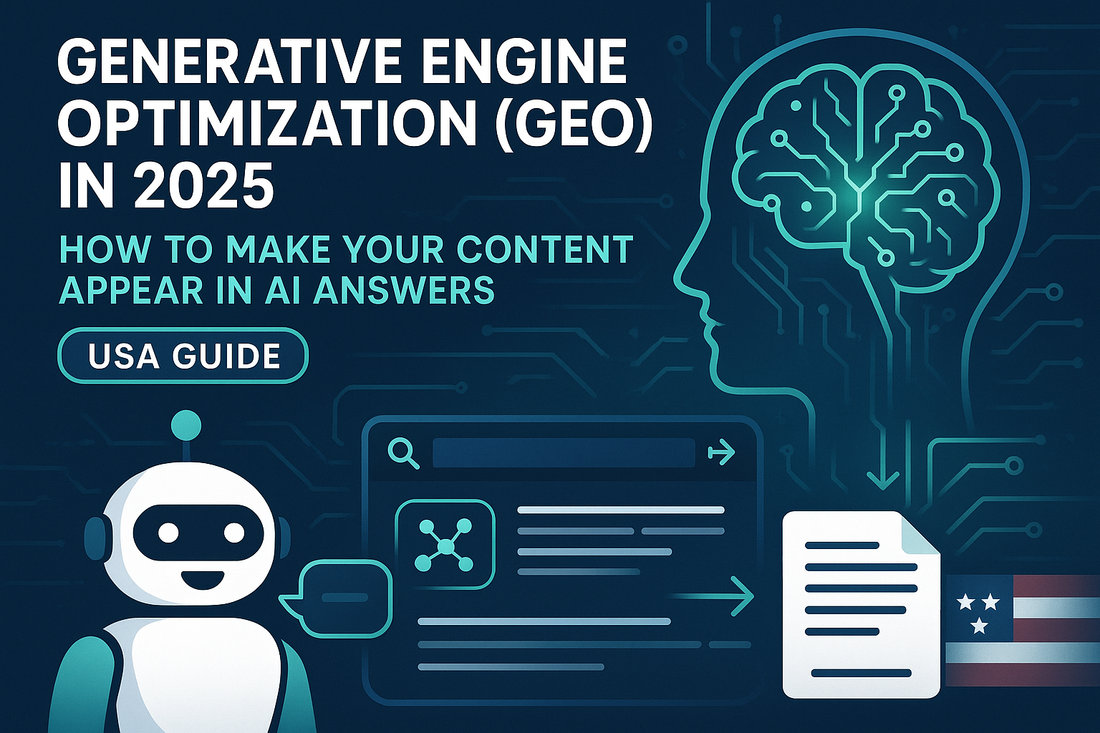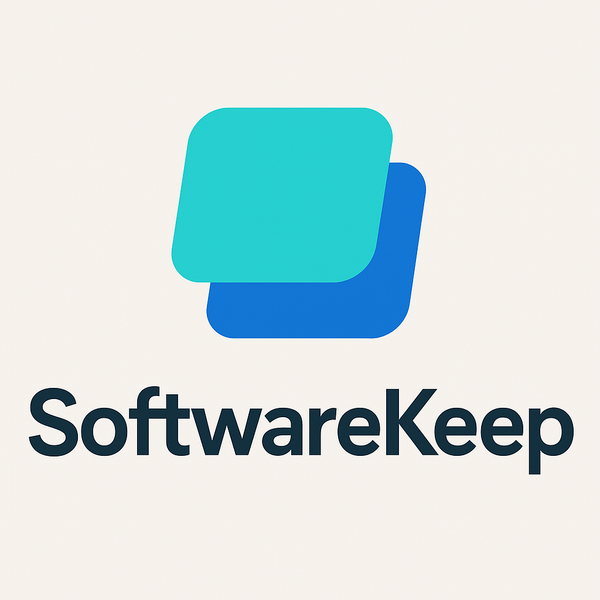
Generative Engine Optimization (GEO) in 2025: How to Make Your Content Appear in AI Answers (USA Guide)
Share
Introduction: Why GEO Matters in the U.S. Market
The digital landscape in the United States is undergoing a seismic shift. According to recent data, approximately 50% of Google searches in the U.S. now produce zero clicks—users are getting their answers directly from AI-powered search results without ever visiting a website. Meanwhile, AI advertising spend in the U.S. continues to surge, with companies investing billions in AI-driven marketing technologies.
The reality is clear: classic SEO alone is no longer enough to maintain content competitiveness in the U.S. market. Enter Generative Engine Optimization (GEO)—the next evolution of digital visibility that ensures your content appears in AI-generated answers across ChatGPT, Google AI Overviews, and other emerging platforms.
What Is GEO/AEO for U.S. Marketers?
Generative Engine Optimization (GEO), also known as Answer Engine Optimization (AEO), is the practice of optimizing content to appear in AI-generated responses and answer engines. Unlike traditional SEO, which focuses on ranking in search engine results pages (SERPs), GEO targets visibility within AI systems that synthesize and present information directly to users.
For U.S. marketers, this means optimizing for:
- ChatGPT and GPT-based systems - Widely used across American businesses and consumers
- Google AI Overviews - Google's AI-powered answer boxes appearing at the top of search results
- Perplexity AI - Growing in popularity among U.S. professionals and researchers
- Microsoft Copilot - Integrated across Microsoft's ecosystem, heavily used in U.S. enterprises
The key difference? Traditional SEO optimizes for algorithms that rank pages; GEO optimizes for AI models that understand, synthesize, and cite content.
How AI Engines Work: Understanding U.S. User Behavior
American users interact with AI differently than traditional search engines:
Query Patterns
U.S. users increasingly use conversational queries through voice assistants (Alexa, Siri, Google Assistant) and chat interfaces. Instead of typing "best coffee maker 2025," they ask "What's the best coffee maker for a small apartment in New York?"
Citation Preferences
AI systems prioritize U.S.-centric content when answering queries from American users. They look for:
- Geographic relevance (U.S. locations, regulations, cultural context)
- Authoritative U.S. sources (.edu, .gov, established media outlets)
- Fresh, timely content aligned with U.S. news cycles and trends
- Structured, easily parseable information
The Role of Authority and Freshness
In the U.S. content ecosystem, AI engines heavily weight domain authority and content freshness. A well-cited article from a reputable U.S. university or government source will almost always outperform generic content, even if the latter is better optimized for traditional SEO.
GEO Best Practices and Tactics for 2025
1. Structure Content for AI Parsing
Format your content so AI can easily extract and cite it:
- Use Q&A format - Create dedicated FAQ sections with clear questions and concise answers
- Clear heading hierarchy - Use H2, H3 tags logically to organize information
- Bullet points and lists - AI models excel at extracting list-based information
- Concise paragraphs - Keep paragraphs to 2-4 sentences for optimal AI comprehension
2. Leverage U.S. Authority Signals
Build credibility through:
- Citations from .edu and .gov domains
- References to U.S. regulatory bodies (FDA, FTC, SEC, etc.)
- Data from reputable U.S. research institutions
- Quotes from recognized American industry experts
3. Implement Schema Markup
Use structured data to help AI understand your content:
- FAQ Schema - Mark up frequently asked questions
- Q&A Schema - Structure question-answer pairs
- Article Schema - Define article metadata, author, publish date
- HowTo Schema - Structure step-by-step guides
4. Build Content Clusters with Internal Linking
Create comprehensive topic clusters that demonstrate expertise:
- Pillar pages covering broad topics
- Supporting articles diving into subtopics
- Strategic internal linking showing content relationships
- Clear topical authority within your niche
5. Maintain Freshness and Relevance
Stay current with U.S. trends:
- Update content regularly with latest statistics and data
- Reference current U.S. events and news when relevant
- Add publication and update dates prominently
- Monitor trending topics in your industry
Challenges and Pitfalls to Avoid
AI Hallucination and Mis-Citation
AI systems can sometimes misinterpret or incorrectly cite content. To minimize this risk, be extremely clear and specific in your writing, avoiding ambiguous statements or complex sentence structures.
Over-Optimization vs. User Experience
Don't sacrifice readability for AI optimization. Content must serve human readers first—AI visibility should be a byproduct of quality, well-structured content, not the sole focus.
Rapidly Changing AI Models
AI systems update frequently, and what works today may not work tomorrow. Stay flexible and monitor performance across multiple AI platforms rather than optimizing for just one.
Case Studies: GEO Success in the U.S. Market
Example 1: Financial Services Content
A U.S. financial advisory firm restructured their retirement planning content using FAQ schema and clear Q&A formatting. Within three months, their content began appearing in ChatGPT responses for retirement-related queries, with proper attribution. Traffic from AI-referred sources increased by 34%.
Example 2: Healthcare Information
A medical information website citing CDC and NIH sources, with proper schema markup and regular updates aligned with U.S. health news, saw their content featured in Google AI Overviews for 67% of their target health queries.
Before and After
Before GEO: Generic blog post with keyword stuffing, no structure, outdated statistics
After GEO: Well-structured article with H2/H3 hierarchy, FAQ schema, current U.S. data, authoritative citations—now appearing in AI answers
Measuring GEO Success in the U.S. Market
Key Metrics to Track
- AI Citation Frequency - How often your content appears in AI-generated answers
- Brand Mentions - Track brand visibility in AI outputs using monitoring tools
- Referral Traffic - Monitor traffic from AI platforms and chat interfaces
- Zero-Click Impressions - Measure visibility even when users don't click through
- Featured Snippet Wins - Google AI Overviews often pull from featured snippets
Tools for GEO Tracking
- BrightEdge - AI content optimization and tracking
- MarketMuse - Content intelligence for AI visibility
- Clearscope - Content optimization with AI focus
- Custom monitoring - Set up alerts for brand mentions in AI platforms
Hybrid SEO + GEO Strategy for U.S. Markets
Balancing Traditional SEO and GEO
The most effective approach combines both strategies:
For Traditional SEO:
- Maintain keyword optimization for SERP rankings
- Build quality backlinks from U.S. domains
- Optimize page speed and technical SEO
- Focus on user engagement metrics
For GEO:
- Structure content for AI parsing
- Implement comprehensive schema markup
- Create authoritative, well-cited content
- Maintain freshness and topical relevance
Content Planning and Architecture
Develop a dual-purpose content strategy:
- Identify topics where AI answers are prevalent
- Create comprehensive, authoritative content on those topics
- Structure content to serve both search engines and AI models
- Build topic clusters that demonstrate expertise
- Update regularly to maintain relevance
Promotion in U.S. Networks
Amplify your content through:
- Partnerships with U.S. educational institutions
- Guest posting on authoritative U.S. domains
- Engagement with U.S. industry influencers
- Distribution through American professional networks (LinkedIn, industry forums)
Conclusion and Next Steps
Your GEO Action Checklist
Ready to optimize for AI visibility? Follow these steps:
- ✅ Audit current content - Identify which pages could benefit from GEO optimization
- ✅ Implement schema markup - Start with FAQ and Article schema on key pages
- ✅ Restructure content - Add clear headings, Q&A sections, and concise paragraphs
- ✅ Add authoritative citations - Reference credible U.S. sources throughout
- ✅ Build content clusters - Create comprehensive topic coverage with internal linking
- ✅ Monitor AI visibility - Track mentions and citations in AI platforms
- ✅ Update regularly - Keep content fresh with latest U.S. data and trends
- ✅ Test and iterate - Continuously refine based on performance
Future Trends to Watch
The GEO landscape will continue evolving. Keep an eye on:
- Agentic AI - AI agents that take actions on behalf of users will change how content is discovered and consumed
- Multimodal AI - Systems that process text, images, and video together will require new optimization strategies
- Personalized AI Answers - AI responses tailored to individual user contexts and preferences
- AI-Native Platforms - New platforms built entirely around AI interaction rather than traditional search
- Regulatory Changes - U.S. regulations around AI transparency and attribution may impact how content is cited
The future of digital visibility in the U.S. market belongs to those who master both traditional SEO and Generative Engine Optimization. Start implementing these strategies today to ensure your content remains visible in the AI-powered future.
